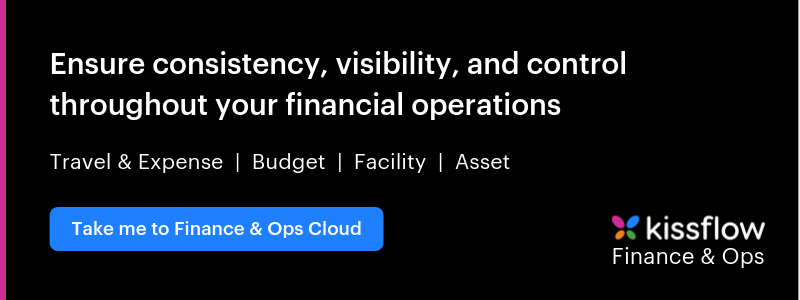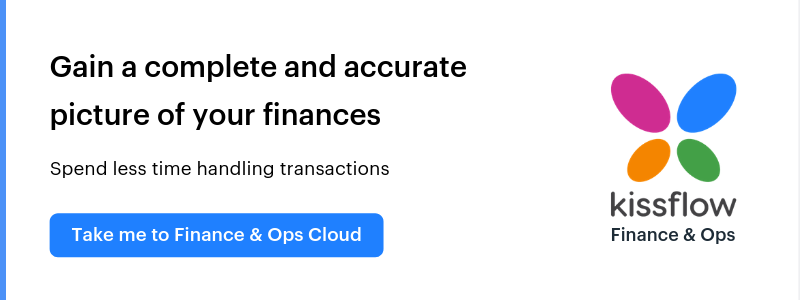The Ultimate Guide to Streamlining Expense Management
Expense management is one of the key areas where businesses have to tread a fine line between cutting back on expenses and spending effectively. This job usually falls to the finance department. They are responsible to make the expense management process better, control costs, and reduce mistakes that can prove costly.
Outdated expense management processes result in ineffective expense management and an incredible waste of time. Paper forms, spreadsheets, and emails are not equipped to handle the expense management needs of modern businesses. A streamlined, automated expense management process can help you identify unnecessary expenditure and cut back on costs.
What Is Expense Management?
Expense management is a systematic set of processes businesses use to record expenses, execute payments, and track their spend. This includes keeping tabs on purchases businesses make, like assets and inventory, as well as the expenses incurred by traveling employees. It also involves defining a spend policy, enforcing it, and finding ways to cut down spending.
Why Manual Methods Don’t Work Anymore
Outdated expense management methods result in ineffective expense control and can lead to unnecessary expenses.
The problem with a conventional pen-and-paper system is that it’s prone to human errors, expense frauds, an exhaustive paper trail, and reimbursements that take weeks to get to the employee's bank account.
Challenges of NOT having a expense management tool:
1. Waste of Time, Money, and Resources
Manual expense solution means time-consuming tasks for you and your employees. According to the Aberdeen Group, the cost of creating and approving one expense report manually is $41.12, while an automated report costs only $7.17.
2. Difficulty Enforcing Policies
Auditing reports and processing payments manually can easily become a full-time job for your finance team. It becomes difficult to enforce corporate spending policies when they have to go through rows of data.
3. No Control Over Spending
It’s difficult to monitor all your spending, especially when it is spread across multiple spreadsheets. This leads to bad business decisions as you don’t have the complete picture.
Best Practices to Streamline Your Expense Management
Record Expenses Data Promptly
It’s really important to record spending as and when it happens so as to account for all expenses. A travel expense tracker with a mobile app comes in handy so employees can submit expenses even when they’re on the move for a business travel.
Automate Whenever Possible
Whether it is automated expense approvals for a particular amount, or creating journal entries immediately, you can find many ways to introduce more smooth functioning. Also, applying automation to approve expense reports saves up a lot of time.
Avoid Paperwork
While exhaustive paper trails are important, you don’t want to go down a rabbit hole during audits. Paper receipts not only fade and become illegible with time, but they’re also easy to lose. It’s always better to scan the receipts and back them up on the cloud.
Integrate With Other Software
Connect your expense reporting process with your other systems like accounting software to avoid manually entering the same data twice. This not only saves you time but also eliminates human errors.
Set Up Online Reimbursements
When the finance team reviews and approves an employee expense claim, you can expedite the reimbursement process by setting up an ACH payment or a direct bank transfer, and sending the money directly to the employee’s bank account.
Types of Expenses Inside SMB's
Businesses incur different kinds of expenses over the course of their daily operations. Some of them are directed toward purchasing capital assets while others are required on a day-to-day basis. Here are some common expense types:
1. Wages and Salaries
The fixed pay a business offers its employees or the variable pay such as incentives and bonuses, or payments to contractors form the major chunk of any business’s expense.
2. Travel expenses
Businesses reimburse employees for the expenses they incur on behalf of the company when they travel for business. This is the second highest controllable expense.
3. Technology expenses
All the infrastructure and the software tools a business use are considered technology expenses.
4. Cost of Goods Sold
Whenever a business procures goods with an intent to sell, there are recorded as assets in the balance sheet. When the business makes a sale, the value of the purchase is expensed as Cost of Goods Sold.
Implementing expense automation with Kissflow Finance & Ops Cloud
Kissflow can help you handle expense management with ease. Here’s how you do it in Kissflow Finance:
Step 1: Configure the forms
Configure the app to suit your exact needs. There are also options to attach receipts. You can auto-fetch data like employee name and id from master databases or compute certain fields.
Step 2: Define the approval hierarchy
Design the sequential path of tasks and assign the roles and responsibilities of the different individuals in the workflow. Include all the stakeholders, hide sensitive information, and provide role-based access to your team. This is the stage where you can automate approvals based on predefined criteria.
Step 3: Track the progress
You can view the status of expense reimbursement requests and identify bottlenecks in a glance. If your requirements change, you can easily make alterations to the app to improve the efficiency of your expense approval process.
How Kissflow Finance & Ops Cloud can help?
If you’re looking to take control over expense approvals, then look no further. Take Kissflow Finance & Ops Cloud for a test drive and see how fast your approvals get. Kissflow Finance is a finance process automation tool that helps you streamline key finance processes like expense approvals and CapEx requests. Sign up for free demo.


